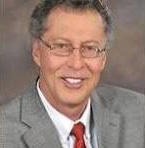SIOUX FALLS, S.D. (KELO) — Landowners continue to gather and plan meetings as Summit Carbon Solutions has applied for a carbon dioxide (CO2) pipeline permit in Iowa.
“In the coming weeks we will be filing our permits in South Dakota and North Dakota,” said Jim Pirolli, the chief commercial officer for Summit. The developer has already applied in Iowa, Pirolli said.
Once the permit is submitted South Dakota that kicks off a process that is roughly a year long, he said.
Projects would harvest CO2 for transport in pipelines across five states
https://www.keloland.com/keloland-com-original/projects-would-harvest-co2-for-transport-in-pipelines-across-five-states/?ipid=promo-link-block1
Summit and Navigator have proposed two CO2 pipelines whose routes include South Dakota, parts of Iowa and Minnesota. Pipelines would capture CO2 from ethanol plants, which would reduce the plants’ overall carbon footprint and allow those plants to sell ethanol at a higher price in markets such as California, which has strict carbon guidelines. The project would also allow participants to use tax credits provided in the 45Q, which provides a tax credit for each metric ton of sequestered CO2. The captured CO2 would be buried at site in North Dakota by Summit and in Illinois by Navigator.
As Summit seeks to secure easements from landowners in South Dakota, Iowa and other states, the possible use of eminent domain comes up.
Ed Fischbach, a landowner in Spink County, said eminent domain is a concern because as of now, there is at least some opposition to agreeing to easements for the Summit pipeline in his region and in other states.
Eminent domain is “a right of a government to take private property for public use by virtue of the superior dominion of the sovereign power over all lands within its jurisdiction,” according to Merriam-Webster.
“I can only speak to my neighbors but there has been a lot of opposition,” Fischbach said.
Several counties in Iowa have passed resolutions, or written letters to the state’s public utilities board, in opposition to the use of eminent domain for CO2 pipelines.
Pirolli said Summit is somewhat surprised by the letters and resolutions in opposition to eminent domain because it wants to use easements and the project will benefit farmers, participating ethanol plants and the overall rural economy.
“Iowa is really organized and ahead of us,” Fischbach said of organized opposition to CO2 pipelines and eminent domain.
McPherson County has passed a moratorium on pipelines that would include CO2 pipelines, Fischbach and Bruce Mack, a landowner near Aberdeen, said.
Opponents of the proposed C02 pipelines cite safety concerns, permanent damage to the land on which the pipeline is buried, and the use of eminent domain on a private project in which a private developer will make millions.
Landowners should have questions about eminent domain and even the easements, said Dave Ganje, a lawyer based in Rapid city. Ganje works in natural resources law and commercial law and litigation.
Eminent domain for private developers
“The use of eminent domain for pipelines and private developers has been established by the U.S. Supreme Court,” Ganje said.
Ganje cited a 2005 U.S. Supreme Court case called Kelo vs. City of New London (Connecticut) in which the court ruled that the city could use eminent domain to transfer land from one private owner to another private owner. The use did not violate the 5th Amendment’s taking clause, according to the court. The court cited public use and economic development.
Rep. Charlie Hoffman, a Republican from Eureka, said the South Dakota courts may need to decide if eminent domain would be an appropriate use for CO2 pipelines.
Part of the original pipeline plan would have gone through Hoffman’s property. The route has since been switched but Hoffman said that is why he supports the pipeline. The pipeline will be a benefit to farmers and ethanol plants, Hoffman said.
Although he supports the proposed Summit CO2 project he understands farmers’ fears of eminent domain. In general, farmers don’t want private development on their property, he said.
Using eminent domain for the purpose of a pipeline is not unusual, Ganje said. The U.S. has thousands of miles of pipelines for various materials, he said.
The use of eminent domain can be allowed through statute, regulatory body such as a state agency or county government, Ganje said.
Chris Nelson, the South Dakota Public Utilities Commissioner, said the PUC does not get involved in eminent domain. That is between the landowner and developer and decided in circuit court, he said.
Pirolli said it’s too early to talk of eminent domain because Summit wants to work with landowners to obtain easements.
“We have just begun right of way acquisition in the state of South Dakota,” Pirolli said. “So far, we’ve had a great reception.”
“It’s preliminary to say we would have to go down that path…,” Pirolli said of eminent domain. “…acquiring right of way takes a long time.”
If Summit believed it would have to use eminent domain to get much of the property for the pipeline, it would not have pursued the project, Pirolli said.
Eminent domain and easements as a share of the profit?
If eminent domain is used then what is the obligation of the private developer to the property owners? Ganje asked.
How is the value of that property determined and should the property owner be entitled to more than a “one-off” payment, Ganje said are questions that must be asked. Should property owners share in the profit from the private development? Ganje asked.
Ganje said the same questions need to be asked with an easement.
Fischbach said landowners also need to understand if an easement obligates them completely, even if the project is not developed.
“They may never get that easement back,” Fischbach said.
Ganje said some easements are written to allow for uses other than the intended use if the original project does not happen.
Pirolli said if Summit’s pipeline is not developed, nothing else can happen on that easement.
Summit has a structure it uses to determine a fair easement payment to the landowner, Pirolli said.
The structure is based on the value of the land, crop production and other factors, he said.
Summit will also pay 100% of the crop or pasture damage in the first year which is the year of construction, Pirolli said.
It will pay 80% of the crop or pasture damage in the second year and 60% in the third year, Pirolli said. Many farmers report little or no crop damage loss in the second and third year, he said.
Meetings
When Summit applies for a permit in the state of South Dakota the process includes information meetings, hearings and other requirements.
Summit already had several meetings in 2021 to inform the public about the proposed CO2 pipeline project in South Dakota, Pirolli said.
Fischbach said at least two meetings were held in October during harvest which was inconvenient for farmers. Also, he received a letter about the proposed CO2 project toward the end of July and surveyors arrived shortly after to ask about surveying property, Fischbach said.
“No one had heard anything prior to then (July letter),” Fischbach said.
Pirolli said Summit hasn’t been invited to meetings such as the one planned for 5:30 p.m. Wednesday, Feb. 2, at the 4-H building in the fairgrounds in Redfield.
Mack said they hope to have ethanol and county representatives at the meeting.
He described some meetings as organized by “activists who are not focused on the benefits of the project…” They are instead focused on opposing it, Pirolli said.
Summit is focused on educating the public about how pipelines can safely transport CO2 and how capturing it can improve the rural economy.
Meanwhile, Fischbach said landowners like him will continue to educate the public about the possible dangers of CO2 pipeline transport and discuss how to oppose a private development using federal tax credits to make money and possibly, take their land.






